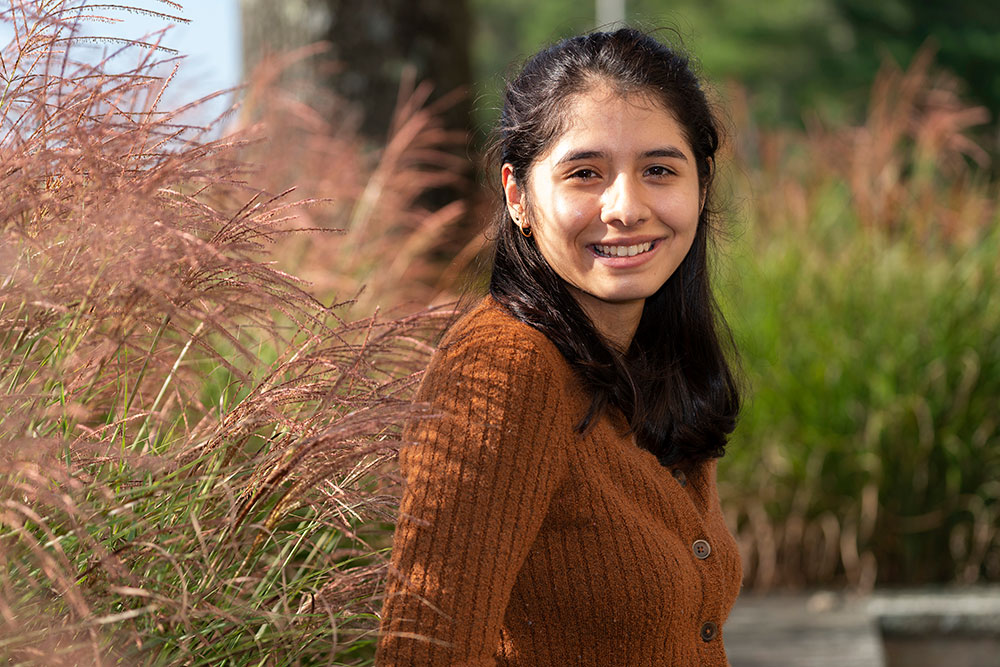Meet Kayla Hernandez: Electrical Engineer Helps Send Particle Beams Into RHIC
July 18, 2022
 enlarge
enlarge
Kayla Hernandez, an Associate Staff Electrical Engineer in the Collider-Accelerator Department at Brookhaven National Laboratory
The following Q&A profile was originally published as part of the new Nuclear and Particle Physics (NPP) directorate website at the U.S. Department of Energy’s Brookhaven National Laboratory. Check out the new site at bnl.gov/NPP/.
When did you join Brookhaven Lab, and how did you find your way here?
I joined the lab in December 2016. My circuits professor at Suffolk Community College recruited me! I was on track to become an environmental engineer when I took his class. I was planning on transferring to Rensselaer Polytechnic Institute and was even looking at apartments upstate. But when he pulled me aside one day after class and told me he’d like to recommend me for a position as a technician at the Laboratory, everything changed! I thought it was too good to be true. I wasn’t sure I could imagine myself as an electrical engineer. I don’t think the reality of the situation hit me until after the interview. Now I couldn’t imagine being anything else!
What is your job at Brookhaven?
I am an Associate Staff Electrical Engineer in the Collider-Accelerator Department’s radiofrequency (RF) group. I work on the controllers for each of the RF cavities that accelerate particle beams from the linear accelerator (linac) all the way through the Relativistic Heavy Ion Collider (RHIC). During the RHIC run, I am on call, which means I sometimes end up troubleshooting remotely—from a coffee shop, a birthday party, the parking lot of various grocery stores, or (my favorite) in my pajamas.
What inspires your work here?
I think all engineers like making things and any good job will challenge you. This place certainly gives me that. I am always making things and I always feel like I am growing. More than anything else, I think what makes the job for me is the people. My group is made up of truly astounding individuals. Their eyes glow with pride when they talk about their projects; you can hear the gears turning while they sort through a problem. That kind of passion is contagious. People have been dreaming this place up, and then building it, and then dreaming it better for longer than I have been alive. Being even a small part of that kind of dedication fills me up.
What is your favorite story about your job?
RHIC collides lots of different kinds of ions, at different energies. This is sometimes called a “mode switch” or a “species change.” Whenever we change to a new setup for the first time, hundreds of parameters need to be manually adjusted. The Main Control Room operators will start from a previous setup that they think will get them in the right ballpark for the change, and then the RF group gets involved to help get us the rest of the way there. What ensues is what appears to the outside observer as essentially rapid-fire telepathic communication between the operators and the RF group. They stay up all night in the control room staring at signals, tweaking parameters, so the ion beam from the Alternating Gradient Synchrotron (AGS) gets kicked out at just the right time to be injected into RHIC, at just the right energy and phase.
Since the [COVID-19] pandemic hit, one of the engineers in my group has been doing this remotely. With a little coaxing he agreed to let me participate. We stayed up to the early hours of the morning, adjusting timing and phasing in RF cavities. In the end, the beam was happily circulating, and my brain was filled to the brim with new insights and understanding. It was exhilarating.
What future activity at the Lab are you most excited about?
I am excited about the Electron-Ion Collider (EIC)—everything about the project: the new hardware my group will design, the collaboration with Jefferson Lab [Thomas Jefferson National Accelerator Facility], the influx of new people. I am very lucky! Right now, there is a unique opportunity to learn about the machine from the beginning, to understand why decisions are being made, what the challenges are, to be a fly on the wall when brilliant people tackle issues that seem insurmountable to me. I am so grateful to be a part of it.
RHIC is a DOE Office of Science user facility for nuclear physics research. RHIC and the EIC project are supported by the DOE Office of Science.
Brookhaven National Laboratory is supported by the Office of Science of the U.S. Department of Energy. The Office of Science is the single largest supporter of basic research in the physical sciences in the United States and is working to address some of the most pressing challenges of our time. For more information, visit science.energy.gov.
Follow @BrookhavenLab on Twitter or find us on Facebook.
2022-20720 | INT/EXT | Newsroom









